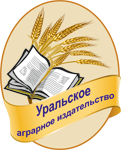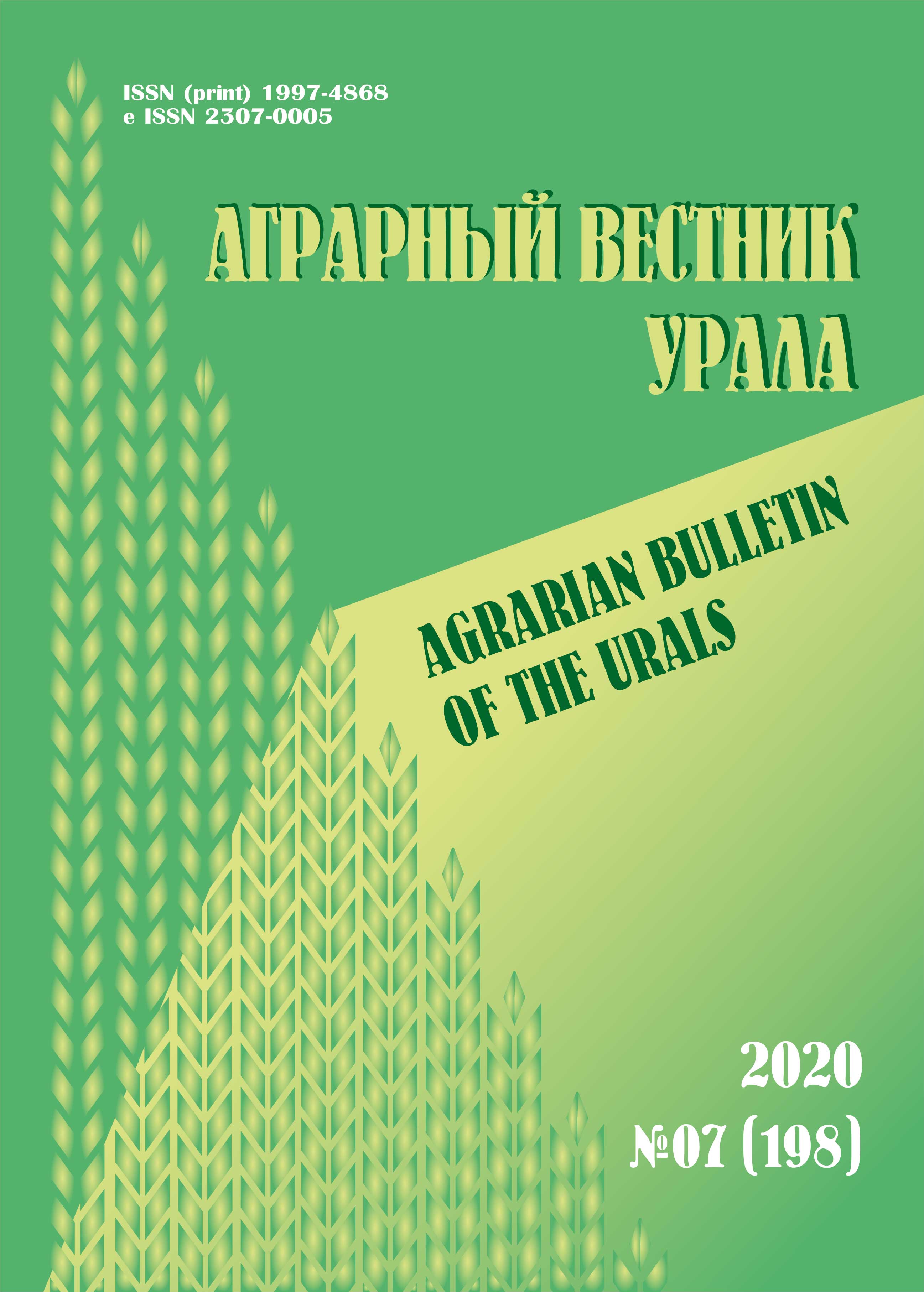Abstract. Background. Due to the fact that now many new forms of poultry are created by crossing existing breeds and populations, a comprehensive genetic analysis of hybrid chickens as a ground for further breeding work is of particular importance. Aim. To study the features of the population and genetic organization of the genomes of inter-breed chicken hybrids. Materials and methodology. The experimental work was based on the use of an oligonucleotide probe (GTG)5, which was labeled with digoxygenin. The probe was hybridized with genomic DNA on a nylon filter, and then labeled DNA fragments were visualized using a streptavidin-alkaline phosphatase conjugate chemistry. The number and distribution of DNA fragments was highly specific for each individual. These parameters under study include similarity coefficient (BS), genetic distances between groups (D) and average heterozygosity levels (H). Scientific novelty. For the first time, marker DNA fragments characterizing individual groups of birds have been identified; these fragments can be used in the certification of populations. The novelty of the work also lies in the determination of the main genetic characteristics in new groups of hybrid chickens, which will be used to consolidate the desired breeding traits. Results. Based on the data obtained, it can be concluded that there are relatively small genetic differences between various hybrid forms, which is the result of using the same source breeds. Brahma × Sussex Light and Uzbek Game × Amrock hybrids were relatively distant from each other (D = 0.070). Sussex Light× Amrock hybrids were the most genetically diverse according to the criterion of average heterozygosity (P = 0.66).
multilocus analysis, DNA probe, heterozygosity, similarity coefficient, restriction endonucleases, hybridization
1. Gal’pern I. L., Perinek O. Yu., Fedorova Z. L. Ispol’zovanie dvukh genofondnykh porod kur dlya sozdaniya trekhlineynogo yaichno-myasnogo krossa [The using of two gene pol breeds of chickens to create a 3-linear egg-meat cross] // Ptitsa i ptitseprodukty. 2020. No. 1. Pp. 34-39. DOI:https://doi.org/10.30975/2073-4999-2020-22-1-34-39. (In Russian.) EDN: https://elibrary.ru/AYNGLU
2. Tyshchenko V. I., Terletskiy V. P. Molekulyarno-geneticheskaya kharakteristika chetyrekh genofondnykh porod kur [Molecular genetics characterization of four gene pool chicken breeds] // Ptitsa i ptitseprodukty. 2019. No. 3. Pp. 64-66. DOI:https://doi.org/10.30975/2073-4999-2019-21-3-64-66. (In Russian.) EDN: https://elibrary.ru/LVHPYQ
3. Desta T T. Sustainable intensification of indigenous village chicken production system: matching the genotype with the environment // Tropical Animal Health and Production. 2021. Vol. 53. No. 3. DOI:https://doi.org/10.1007/s11250-021-02773-5. EDN: https://elibrary.ru/NLKFIF
4. Zhuang Z. X., Cheng S. E., Chen C. F., Lin E. C., Huang S. Y. Genomic regions and pathways associated with thermotolerance in layer-type strain Taiwan indigenous chickens // Journal of Thermal Biology. 2020. Vol. 88. Article number 102486. DOI:https://doi.org/10.1016/j.jtherbio.2019.102486. EDN: https://elibrary.ru/OQZZWQ
5. Xue Q., Li G., Cao Y., Yin J., Zhu Y., Zhang H., Zhou C., Shen H., Dou X., Su Y., Wang K., Zou J., Han W. Identification of genes involved in inbreeding depression of reproduction in Langshan chickens // Animal Bioscience. 2021. Vol. 34. No.6. Pp. 975-984. DOI:https://doi.org/10.5713/ajas.20.0248. EDN: https://elibrary.ru/UMHWCM
6. Doekes H. P., Bijma P., Windig J. J. How depressing is inbreeding? A meta-analysis of 30 years of research on the effects of inbreeding in livestock // Genes (Basel). 2021. Vol. 12. No. 6. P. 926. DOI:https://doi.org/10.3390/genes12060926. EDN: https://elibrary.ru/JJZXYP
7. Han W., Xue Q., Li G., Yin J., Zhang H., Zhu Y., Xing W., Cao Y., Su Y., Wang K., Zou J. Genome-wide analysis of the role of DNA methylation in inbreeding depression of reproduction in Langshan chicken // Genomics. 2020. Vol. 112. No.4. Pp. 2677-2687. DOI:https://doi.org/10.1016/j.ygeno.2020.02.007. EDN: https://elibrary.ru/LPEEDX
8. Bosse M., Megens H. J., Derks M. F. L., de Cara Á. M. R., Groenen M. A. M. Deleterious alleles in the context of domestication, inbreeding, and selection // Evolutionary Applications. 2018. Vol. 12. No. 1. Pp. 6-17. DOI:https://doi.org/10.1111/eva.12691. EDN: https://elibrary.ru/XWHGUH
9. Borodin A. M., Alekseev Ya. I., Gerasimov K. E., Konovalova N. V., Terent’eva E.V., Efimov D. N., Emanuylova Zh. V., Tuchemskiy L. I., Komarov A. A., Fisinin V. I. Selektsiya produktivnosti kur vliyaet na geny immunnoy sistemy [Shickens productivity selection affects immune system genes] // Vavilov Journal of Genetics and Breeding. 2020. Vol. 24. No. 7. Pp. 755-760. DOI:https://doi.org/10.18699/VJ20.670. (In Russian.) EDN: https://elibrary.ru/DWBEFT
10. Korshunova L. G., Karapetyan R. V. Molekulyarnaya genetika v selektsii sel’skokhozyaystvennoy ptitsy [Molecular Genetic Methods in Poultry Selection] // Ptitsevodstvo. 2018. No. 2. Pp. 2-5. (In Russian.) EDN: https://elibrary.ru/YQUEES
11. Rostamzadeh M. E., Esmailizadeh A., Ayatollahi M. A., Asadi F. M. A genome-wide scan to identify signatures of selection in two Iranian indigenous chicken ecotypes // Genetics Selection Evolution. 2021. Vol. 53. No. 1. P. 72. DOI:https://doi.org/10.1186/s12711-021-00664-9. EDN: https://elibrary.ru/FURCDA
12. Zhang C., Lin D., Wang Y., Peng D., Li H., Fei J., Chen K., Yang N., Hu X., Zhao Y., Li N. Widespread introgression in Chinese indigenous chicken breeds from commercial broiler // Evolutionary Applications. 2019. Vol. 12. No. 3. Pp. 610-621. DOI:https://doi.org/10.1111/eva.12742. EDN: https://elibrary.ru/LTVVBB
13. Samaraweera A. M., Liyanage R., Ibrahim M. N., Okeyo A. M., Han J., Silva P. High genetic diversity but absence of population structure in local chickens of Sri Lanka inferred by microsatellite markers // Frontiers in Genetics. 2021. Article number 723706. DOI:https://doi.org/10.3389/fgene.2021.723706. EDN: https://elibrary.ru/VWPVOM
14. Ren T., Nunome M., Suzuki T., Matsuda Y. Genetic diversity and population genetic structure of Cambodian indigenous chickens // Animal Bioscience. 2022. Vol. 35. No. 6. Pp. 826-837. DOI:https://doi.org/10.5713/ab.21.0351. EDN: https://elibrary.ru/GGWPOS
15. Korshunova L. G., Karapetyan R. V. Ispol’zovanie geneticheskikh metodov na osnove DNK-markerov produktivnykh priznakov v selektsii kur [The use of the genetic methods based on the DNA markers of the productive traits in the selection of chicken] // Ptitsevodstvo. 2021. No. 5. Pp. 4-7. DOI:https://doi.org/10.33845/0033-3239-2021-70-5-4-7. (In Russian.) EDN: https://elibrary.ru/XJMIDJ
16. Makarova A. V. Primer ispol’zovaniya genofonda kur v selektsionnoy programme [An example of using the chicken gene pool in breeding program] // Genetics and Breeding of Animals. 2019. No 3. Pp. 24-28. DOI:https://doi.org/10.31043/2410-2733-2019-3-24-28. (In Russian.) EDN: https://elibrary.ru/QSMYGP
17. Chen L., Wang X., Cheng D., Chen K., Fan Y., Wu G., You J., Liu S., Mao H., Ren J. Population genetic analyses of seven Chinese indigenous chicken breeds in a context of global breeds // Animal Genetics. 2019. Vol. 50. No. 1. Pp. 82-86. DOI:https://doi.org/10.1111/age.12732.









